Kingston HyperX 3K (240GB) SSD Review
by Anand Lal Shimpi on April 10, 2012 3:00 AM ESTWith OCZ intent on moving as much volume to its in-house Indilinx controllers as possible, SandForce (now LSI) needed to expand to additional partners. OCZ has strong control over the channel so SandForce needed to turn to multiple partners to diversify its portfolio. One key win for SandForce was Kingston. We saw the launch of the first Kingston SandForce (SF-2281) based drive last year under the HyperX brand. Today Kingston is announcing a lower cost version of the drive with the HyperX 3K.

Kingston's HyperX 3K (top) vs. Kingston's HyperX (bottom)
The 3K in this case refers to the number of program/erase cycles the NAND inside the SSD is rated for. As we've discussed on numerous occasions, NAND endurance is a finite thing. The process of programming a NAND cell is physically destructive to the cell itself and over time you'll end up with NAND that can no longer hold a charge (or your data).
Intel's 50nm MLC NAND was rated for 10,000 program/erase cycles. Smaller transistor geometries, although tempting from a cost/capacity standpoint, do come with a reduction in program endurance. At 34nm Intel saw its p/e count drop to 5,000 cycles, and at 25nm we saw a range from 3,000 - 5,000. Modern day SSD controllers include wear leveling logic to ensure that all cells are written to evenly, so even at the lower end of the Intel 25nm range there's more than enough lifespan for a typical client workload. Let's do some math on a hypothetical 100GB drive with four different types of NAND (3K, 5K, 10K and 30K P/E cycles):
| SSD Endurance | ||||||
| 3K P/E Cycles | 5K P/E Cycles | 10K P/E Cycles | 30K P/E Cycles | |||
| NAND Capacity | 100GB | 100GB | 100GB | 100GB | ||
| Writes per day | 10GB | 10GB | 10GB | 10GB | ||
| Write Amplification | 10x | 10x | 10x | 10x | ||
| P/E Cycles per Day | 1 | 1 | 1 | 1 | ||
| Total Estimated Lifespan | 8.219 years | 13.698 years | 27.397 years | 82.191 years | ||
Assuming you write 10GB to your drive every day (on the high end for most client workloads), and your workload is such that the controller sees an effective write amplification of 10x (due to wear leveling/garbage collection the controller has to write 10x the amount of data to NAND that you write to host), you'll blow through one p/e cycle per day. For 25nm 3K p/e cycle NAND that works out to be 8.219 years, at which point your data will remain intact (but presumably read-only) for 12 months. Heavier workloads come with higher write amplification factors, but for client use this math works out quite well.
NAND is binned similar to CPUs, except instead of binning for clock speed and power NAND is binned for endurance. Intel offers both 3K and 5K rated 25nm NAND (among others, including ~30K p/e cycle eMLC NAND). The standard HyperX drive ships with 5K 25nm Intel MLC NAND, while the HyperX 3K ships with 3K 25nm Intel MLC NAND.
There's no obvious difference in Intel's part numbers, so I'm not sure if there's a good way to tell whether you're looking at 3K or 5K rated parts from Intel.
The loss of endurance shouldn't matter for most client workloads as I mentioned above, but if you're deploying these drives in a write heavy enterprise environment I'd look elsewhere. Otherwise, the cost savings are worth it:
| SSD Pricing Comparison | ||||||
| 90GB | 120GB/128GB | 240GB/256GB | 480GB/512GB | |||
| Crucial m4 | $154.99 | $299.99 | $549.99 | |||
| Intel SSD 520 | $184.99 | $344.99 | $799.99 | |||
| Kingston HyperX | $189.99 | $329.99 | $874.99 | |||
| Kingston HyperX 3K | $139.99 | $169.99 | $319.99 | $699.99 | ||
| Samsung SSD 830 | $174.99 | $299.99 | $779.99 | |||
| OCZ Octane | $199.99 | $339.99 | $849.99 | |||
| OCZ Vertex 3 | $199.99 | $339.99 | $1199.99 | |||
| OCZ Vertex 4 | $179.99 | $349.99 | $699.99 | |||
HyperX 3K drives are already available via Newegg. The biggest cost savings appear to be at the 480GB capacity, although you'll save a good $10 - $20 for most capacities.
Kingston also offers an optional upgrade bundle kit including a handy screwdriver, SATA cable, USB cable, Acronis cloning software, SATA to USB adapter and a 3.5" sled for mounting in a desktop case. It's a nice bundle although I really wish we'd see better 3.5" adapters in these kits. The bundle will set you back another $10 over the prices in the table above.
Like many SandForce partners, Kingston offers a toolbox to view SMART data however you cannot secure erase the drive from the utility. A separate utility is offered to handle firmware updates.
Performance & Final Words
With Kingston's latest performance is, thankfully, unharmed. The HyperX 3K performs just as well as the 5K rated HyperX drive:
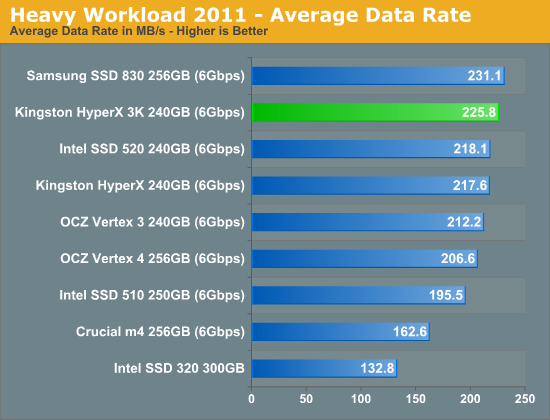
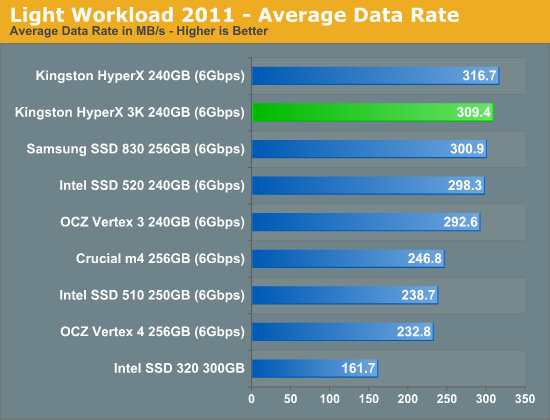
Kingston's SF-2281 implementation has always been extremely fast and the HyperX 3K is no exception. You are looking at one of the fastest drives we've ever tested. I've included our usual benchmarks in the subsequent pages but you can also use Bench to compare drives directly.
The risk, as always, with SandForce based drives is that you'll run into a combination of drive + system that triggers either an incompatibility or the infamous BSOD issue. I haven't seen the bug crop up on the HyperX 3K but I haven't spent a lot of time looking for it either.
All I can offer is the same caution we tack onto most of our SSD reviews. If you know someone with a system similar (identical?) to yours who isn't running into problems then you'll probably be fine.
If you've had a good experience with the HyperX in a system, then the HyperX 3K is a no-brainer. You get similar, already great, performance at a lower cost.


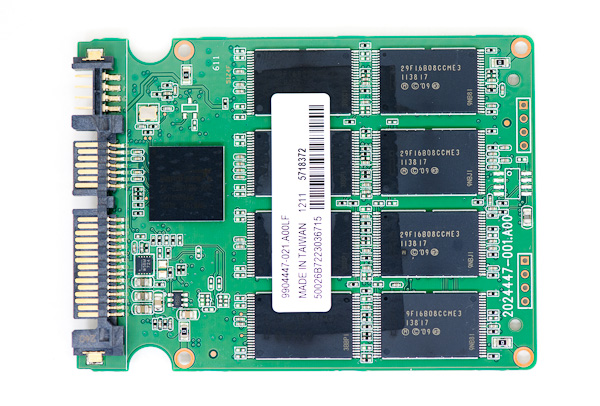
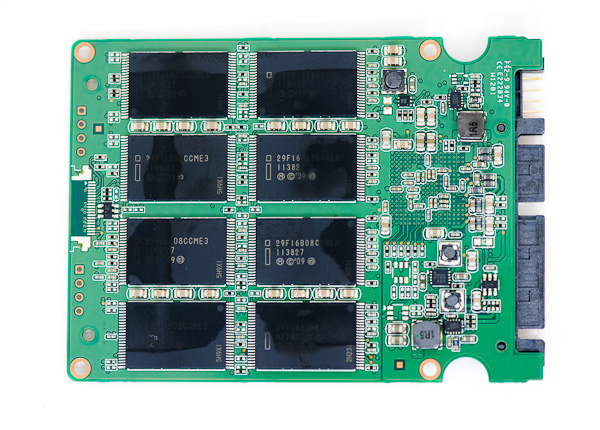

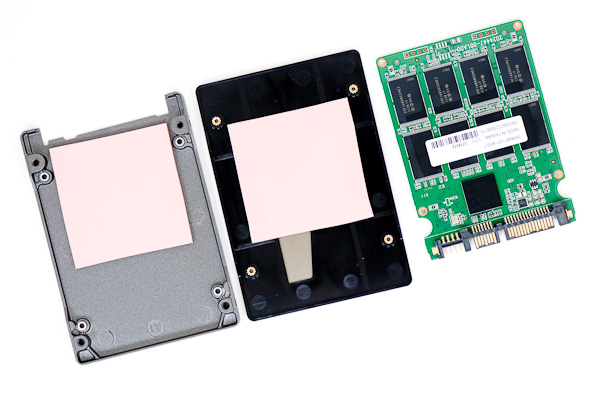








44 Comments
View All Comments
Coup27 - Tuesday, April 10, 2012 - link
I've had this issue across multiple platforms though. W7 with IE9 and FF11. XP with IE8, and now my work machine which is W7 with IE9. I regularly run CCleaner so I really don't think it's been my end, sorry.InsaneScientist - Tuesday, April 10, 2012 - link
I'm not a web programmer, so I can't help much with why it's happening, but, for what it's worth, I had some extra time so I tried to reproduce your problem.I tried every browser/os combination available to me at my house, which would be:
Windows 8 CP x86 (to go) with IE10, Chrome 18, & FF 11
Windows 8 CP x64 with IE10, IE10x64, Chrome 18, FF11, FF Aurora 13, & Safari 5.1.5
Windows 7 x86 with IE9, Chrome 18, FF 11
Windows 7 x64 with IE9, Chrome 18, FF 11, Safari 5.1.5
Windows Vista x86 with IE9, Chrome 18, & FF 11
Windows XP x86 (Virtual Machine) with IE8 and FF11
Windows Thin PC x86 with IE9 & FF 11
Safari in iOS 4.2 and 5.1
The stock browser in Android 2.3.7 and 4.0.4
I couldn't reproduce the problem at all... So it's definitely not something inherent to the website, because it works for some people and doesn't work for others... but I'm at a loss as to what that could be. It also doesn't seem like it's unique to you though (as seen in the comment below yours. Very strange...
bji - Tuesday, April 10, 2012 - link
It's an intermittent problem; just because you couldn't reproduce it the time or times that you tried, doesn't mean that it's not inherent in the site. Unless by inherent you mean "happens every time", but we already established that that is not the case.The server(s) that serve up some part of the content of the site are occasionally generating something bad. Maybe there are multiple web servers behind a load balancer and one of them as a corrupted style sheet page or something that is occasionally being handed out?
bji - Tuesday, April 10, 2012 - link
That's EXACTLY what I was seeing occasionally.Something is busted on your site; don't blame it on our browsers.
AssBall - Tuesday, April 10, 2012 - link
An intermittent problem that you have and can't reproduce or analyze. I blame the user, not Anandtech or your browser.Coup27 - Wednesday, April 11, 2012 - link
So I turn on my machine, load AT, and it does that? And thats somehow "the user"?Well done.
bji - Wednesday, April 11, 2012 - link
If it were just me, maybe that would be true. But multiple people have reported the exact same symptoms.Jaraxal - Tuesday, April 10, 2012 - link
I'd suggest a small modification to alert readers that they've reach the end of the article. As it is, it definitely appears as though it's missing "something" when the article just ends with a chart.KZ0 - Tuesday, April 10, 2012 - link
I love it. Keep up the good work!aguilpa1 - Tuesday, April 10, 2012 - link
That's cool but if there was a,... and in overview and conclusion notation (at the beginning) with a read next few pages for results of testing, information and benchmarks,... noted somewhere it would make more sense, don't ya think?